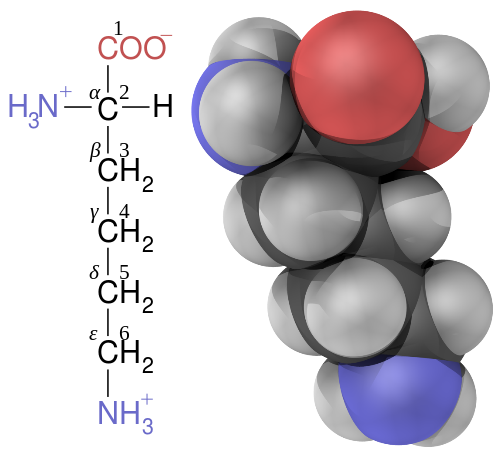Math has changed the way I think about almost everything. It is quite steady, and seems universally applicable. During my undergrad, I realized that while I may only comprehend a small fraction of mathematics, I can grasp the tremendous power to quantify observations, and guide creations. With the development of faster computers, mathematics has become increasingly freed to explore more complex mathematical structures, such as those found in computational geometry and graph theory. It has been my curiosity in these areas, along with my experience in architecture, that has driven me to explore creativity through algorithmic design.
I enjoyed problem sets in classes such as calculus, statics, dynamics, and differential equations because there was a clear objective and rarely a gray area regarding the correct answer. Math felt like a definitive tool, but it certainly has practical limitations. Valuation of subjective topics, problems with missing data, or problems of higher-order complexity can be very difficult, and often impossible, for mathematics to solve. Too many times, numbers have been called on to ‘make the case’ but instead have been used as a cheap tool to force conclusions. This is done through statistical deception, p-hacking, or proofiness.
To avoid those mistakes requires vigilance and a strong ethical standard to ensure that everything is calculated and presented properly. Metrics can be used to cloud understanding in the search for causality, because often times the audience may not have the specific knowledge or cognitive ability to see gaps or misrepresentations.
The website Spurious Correlations has a wonderful and entertaining collection of correlations that exist throughout large data sets. Correlation is not causation, giving reason to critical and skeptical approaches to findings and the rhetoric used to present them. FiveThirtyEight has an excellent article covering the misuse of the p-value, which has become the most sought after indication of statistical significance.
Such misuse within the scientific community is minuscule compared to the improper presentation of research by news organizations. Scientific research cannot always be given a catchy or straightforward summary that is fit for a wide audience. Despite this, appealing titles to new research are often forced and may completely misrepresent studies. John Oliver covers many examples below in an informative and entertaining way:
Interpreting data and presenting it properly is important, no matter how boring the upshot may be. If people do not have the knowledge to understand or appreciate the value, it should not be modified to satisfy the general public. It may be difficult for some researchers, because appropriate recognition may be hard to come by. The upshot here is that research can be a long and arduous process, and to summarize a small piece with sweeping generalizations and conclusions is often over-romanticizing the truth.
It is important to know this dark-side of data when entering the world of algorithmic modeling, or Generative Design. These areas essentially take data as an input, manipulate it in some way, and provide some sort of output, usually in some sort of geometric or visual form. Anything the algorithm is to accomplish, the programmer must understand properly, else the intended output will not be generated.
I have always been drawn to music, nature, and design for their elegant presentation of mathematics. Improvisation is often revered, and I am in awe by the streaming ingenuity throughout the animal kingdom, among artists of all varieties. For example, the genius of Mozart to finish the overture to Don Giovanni the night before the premiere shows human’s ability to produce complex and satisfying works (combinations) very efficiently. Of course, Mozart was a prodigy, and few would classify his feats as easy, but he is still an example of what the human brain can produce.
Let’s say that with enough time, I might be able to analyze Don Giovanni mathematically, and compare my observations of the score with real-time observations of my own happiness or satisfaction. I, or perhaps more capable researchers, could then develop an algorithm that reverse engineers Don Giovanni, in an attempt to be more pleasing. I can imagine some of the logic that would be at play, but the subtleties and time required to compute everything might be too complex. If I do not interpret the mathematics of the score properly, the algorithm certainly will not. A musician familiar with the score may be able to understand ways that the score could be modified, but the question is whether I could define that logic for an algorithm to create unique variations. It may be possible, but this is something that society might generally hold higher value coming from a person rather than a machine. I appreciate the ingenuity of computer programs, but recognize tremendous beauty for the freehand, freestyle, improvisation; particularly as the world becomes more cold and calculated.
This may be confusing rhetoric. Cold and calculated or free and flowing? My answer is frustratingly: both. But of course! Tool-making has always opened the doors to higher complexity, allowing for greater efficiency and diversity. The issue is really how the tool can do what the users are unable to do themselves, and in a way that brings the best out of the user.
Google’s search algorithm indexes the web, creating a PageRank, which is a complex network of connections between websites. This leads to a quick and fairly accurate presentation of websites, hopefully providing an inquisitive mind with the information that they desire. The algorithm takes the existing work done by people in creating a vast network of connections between websites. Google Search was a great idea coupled with a crowd-sourced data set, one of the first crowd-sourced successes of the technology age.
There are also many examples of nature creating tools. The majority of earth is made up of a small variety of atoms (I could go more elementary, but I’ll just start with atoms). Combinations of atoms bonded together create molecules, such as water, air, amino acids, etc. Amino acids are often termed the building blocks to life. Below is an example of the molecular structure of the amino acid Lysine.

Amino acids string together to make proteins, which are essentially biological machines. Proteins are the little tools that have played a central role in building the complexity of life. Through consciousness and the study of physics, chemistry, and biology, we have begun to connect a feedback loop to that process. It appears that nature was the first engineer, and has a lot of wisdom to offer between the creation of simple proteins, all the way to the evolution of homo sapiens. Relying on such processes for the development of additional biological tools is not applicable for our lifetimes, so new tools are researched, designed, synthesized, and assembled.
Many tools have become more useful when converted to digital, but there is always something missing. Digitally remastered versions of music albums originally recorded with analog technology are branded as higher quality, as they do not contain the noise and skips of vinyl records. However, because of the sampling process in analog to digital conversion, data loss unavoidable.

Most people may not notice a difference, and may value the lack of skips and the filtering of noise, but audiophiles often prefer the analog versions and physical media. In the age of the internet, Mp3s were created as a means of sharing tracks quickly and easily. Songs would average 3-4MB in size, whereas the track on a CD can be upwards of 30MB, thus data loss is very significant. Digital format has surpassed physical media in total sales, and the subset of streaming services is becoming increasingly popular, leading to consumers dishing out more for music in recent years.
If misrepresenting this, one might say that people prefer lower quality playback, when in reality, it may just be the easiest thing for them to access; the path of least resistance. The degradation in quality is generally accepted for the flexibility of instantly finding and playing just about anything. Audiophiles, DJs, and music producers, however, might want to make the case for high standards so that an incentive still exists for the producers and distributors to offer higher quality products. Diversity and variety are highly important, and optimization does not always have to mean mono-production, but this is what often results.
Most software that I have used for drafting is more or less the same between the analog and digital processes, just much faster in the latter. The speed in digital for certain operations is great, but often times the subtleties and flow for design are not feasible. While [ctrl][c] and [ctrl][z] are lovely, compared to analog forms of replication or deletion, the sketchpad can be far more effective for producing schematics in real-time. Some aspects have been lost in digitizing the process, but many potentials have yet to be uncovered. Understanding the strengths and weaknesses of each tool and applying them appropriately is the key. It can often come down to how the mathematics and data are interpreted.
I want a design workflow that can operate organically while mimicking the evolutionary process. I want to use my brain to steer the design but assign certain exploratory tasks to a computer that would be impractical for me to complete in a realistic time-frame. Good tasks for computers are discrete and iterative, while good tasks for humans are where we can use our creativity and intuition. Appropriate selection, interpretation, and execution of these tasks will be some of the major issues to overcome in the development of an effective algorithm, but I propose that the power of human intuition, coupled harmoniously with the computational power of machines is the basis for designing and creating in a better way.
